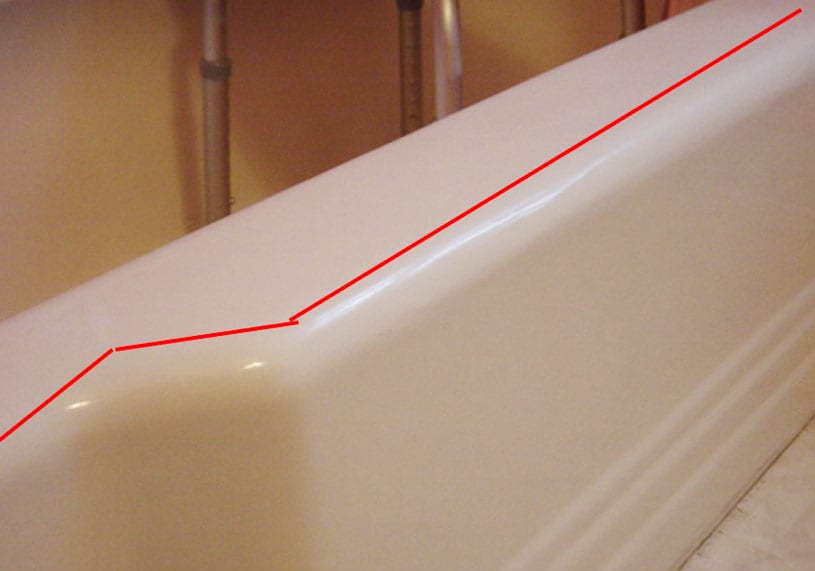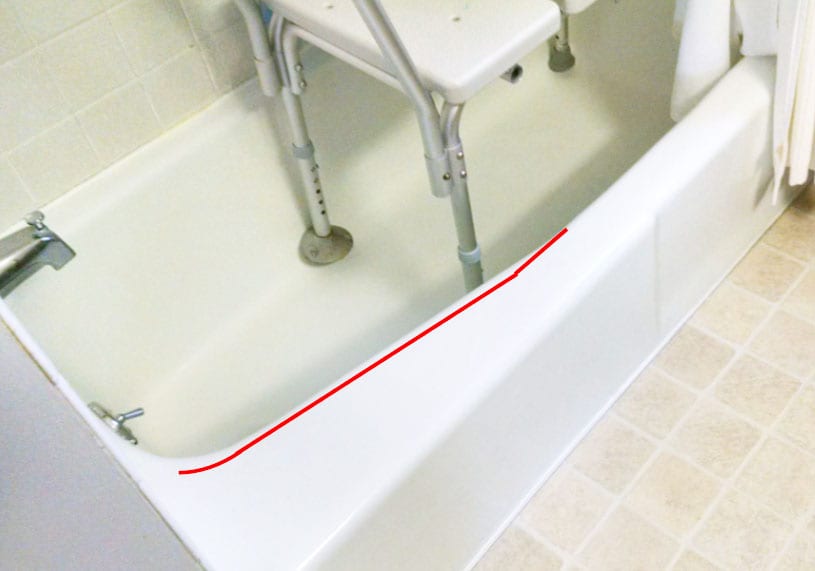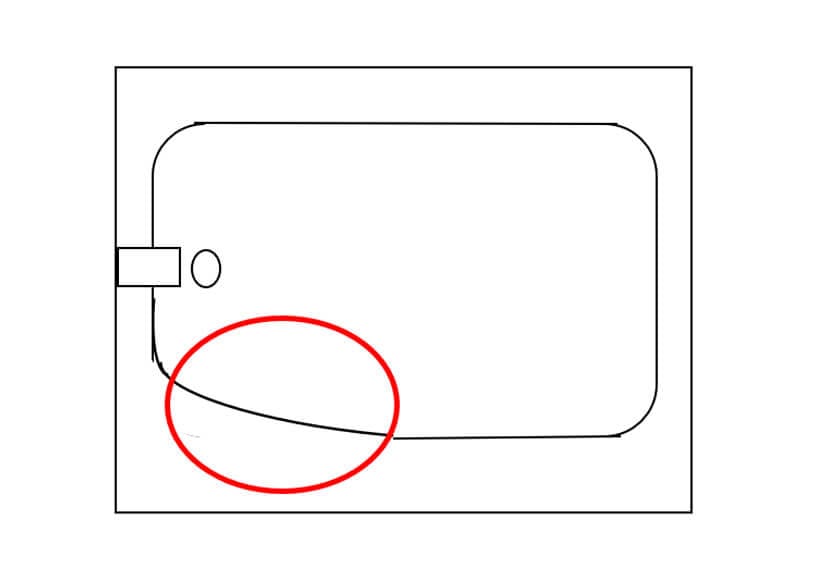Is My Tub Cast Iron or Steel?
Cast Iron Tubs
While most cast iron and steel tubs are candidates for tub shower conversions, it is difficult for most people to distinguish between the two. Both tubs are metallic (i.e. magnets will stick to them) and both can have porcelain-like finishes, a good rule of thumb is that bathtubs installed prior to the mid 1960’s are usually cast iron. Here are some examples.The "Bump-Out", a post-war cast iron classic; the outer tub wall starts out narrow from each end. About 10”-12” in, the wall takes a 60° turn out into the room. The wall thickness on the bump-out expands to approximately 5” wide (thick) and is about 36” long. Cascading ripples at the bottom of the apron is also an indicative characteristic of the cast iron tubs.
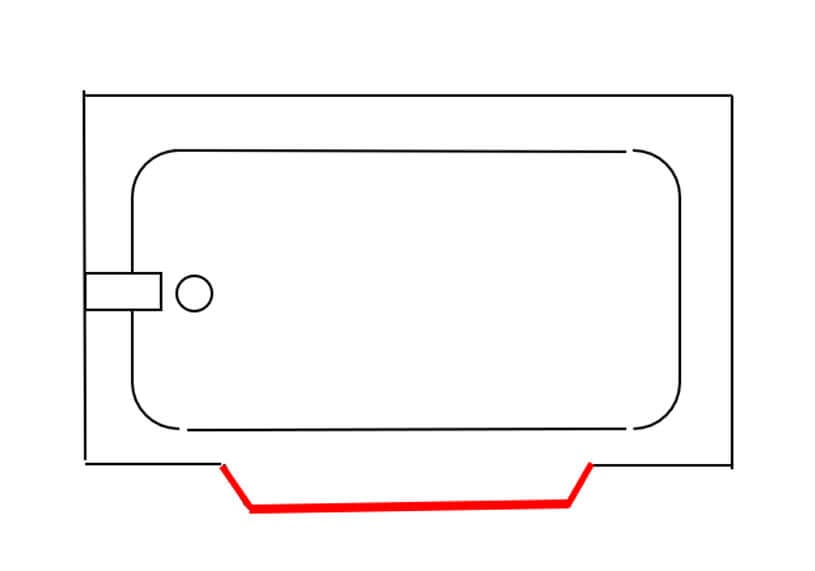
The "Expanding Rail" - another cast iron classic shown to the right. The tub's rail starts out narrow (usually at the rear of the tub) and gets wider as it goes towards the opposite end.
Steel Tubs
Raised Embossing on the front apron of the tub shown in Figure 1 is a distinguishing characteristic that the tub is steel.
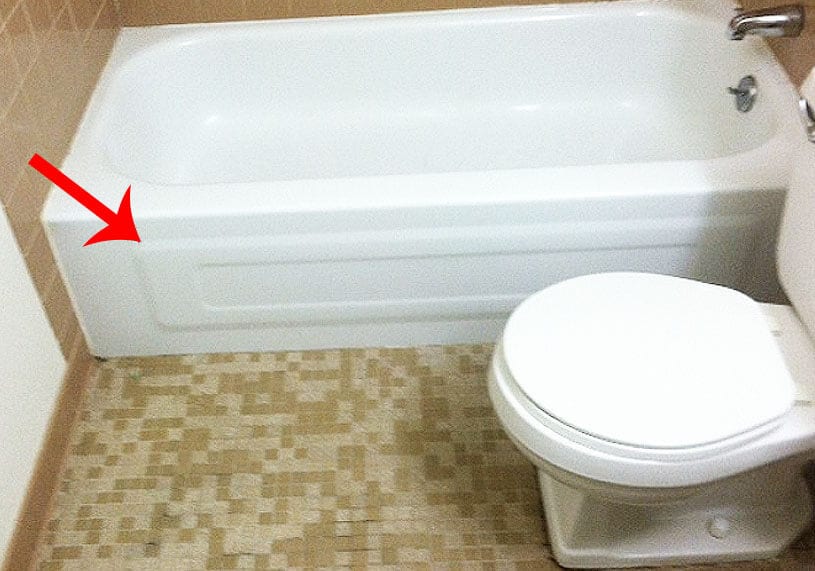
The “muffin top” apron feature seen in Figure 2 and illustrated in Figure 2b, is a style found in some steel tubs. Muffin tops can come with either a bowed or a straight apron (Figures 3 & 4 respectively).
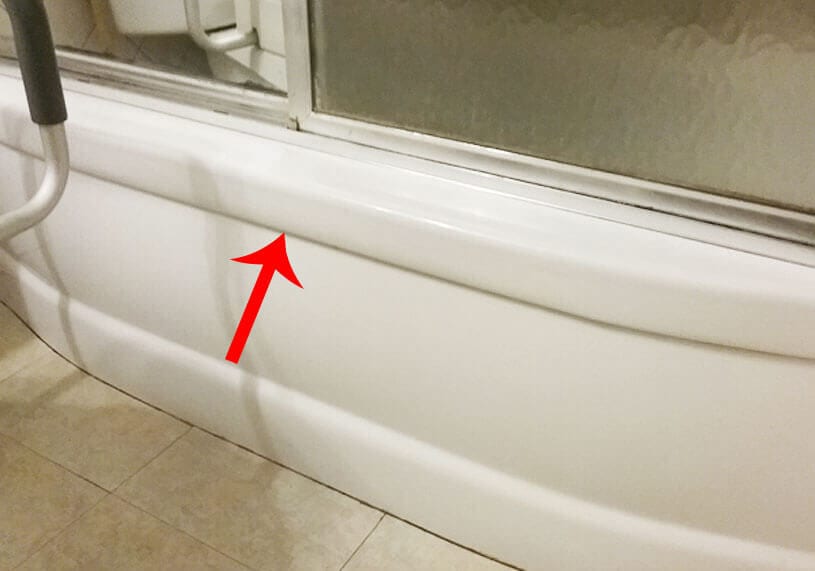
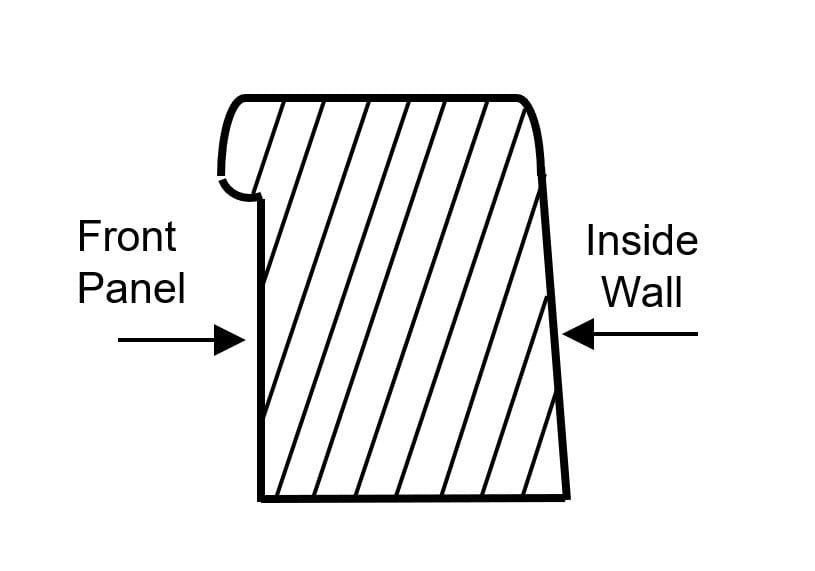
A third, but not always a defining characteristic of steel tubs, is that their inside and outside walls are generally parallel; that is, until they reach the ends of the tub. This is shown by the red lines in Figures 3 & 4 birds-eye sketches.
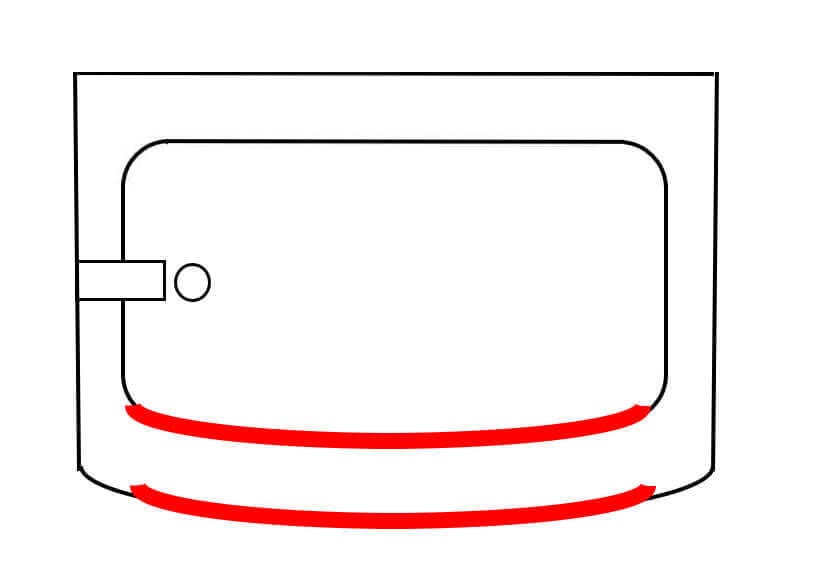
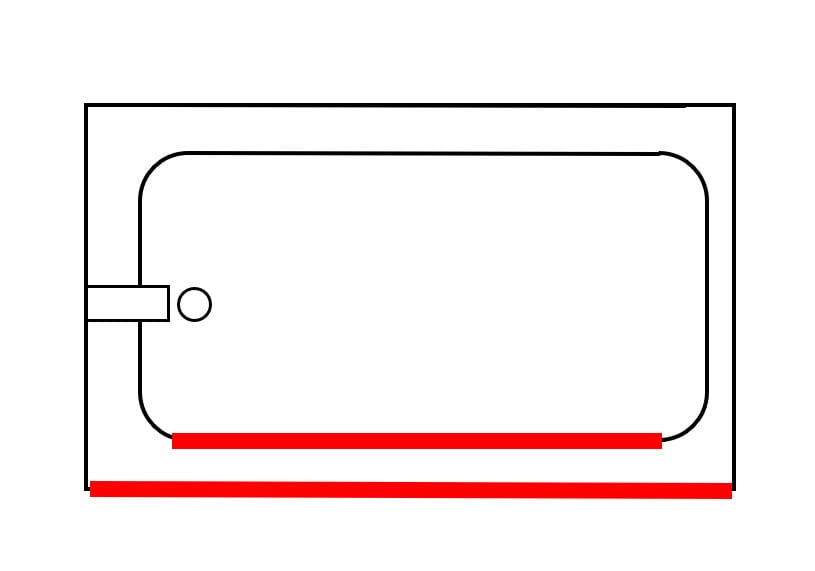
And due to their lighter weight, the bathtubs found in mobile and manufactured homes are generally constructed of either steel or fiberglass.

